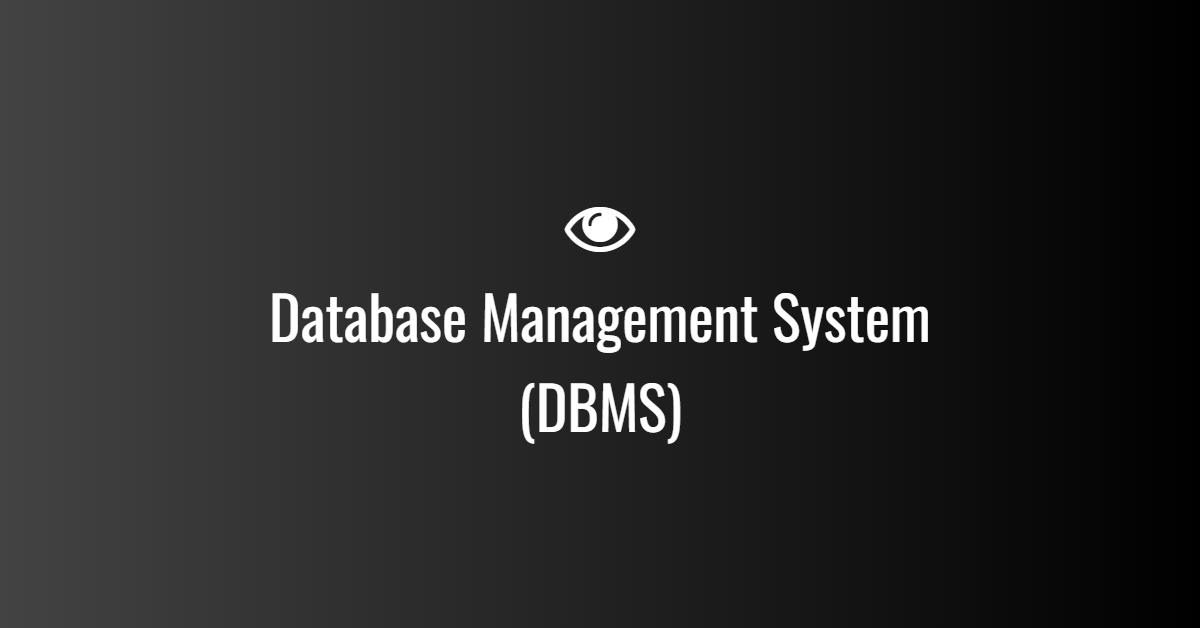
Database Management System (DBMS)
Introduction
In today’s data-driven world, businesses and organizations rely on efficient systems to store, manage, and retrieve data. A Database Management System (DBMS) is software that enables users to create, manage, and manipulate databases effectively. It provides a structured way to store data while ensuring security, integrity, and accessibility.
This article explores the concept of DBMS, its types, functions, advantages, and real-world applications.
What is a DBMS?
A Database Management System (DBMS) is a software system that allows users to interact with databases. It provides tools for adding, updating, retrieving, and managing data while ensuring consistency and security.
Instead of storing data in scattered files, a DBMS centralizes data management, making it easier to organize and retrieve information efficiently.
Types of DBMS
DBMS can be classified into different types based on how data is structured and managed:
1. Hierarchical DBMS
- Data is organized in a tree-like structure with parent-child relationships.
- Useful in applications where data follows a predefined hierarchy.
- Example: IBM Information Management System (IMS).
2. Network DBMS
- Uses a flexible relationship model, allowing multiple parent-child connections.
- Suitable for complex applications requiring many-to-many relationships.
- Example: Integrated Data Store (IDS).
3. Relational DBMS (RDBMS)
- Stores data in tables (rows and columns) with relationships between them.
- Uses Structured Query Language (SQL) for data manipulation.
- Most widely used DBMS in modern applications.
- Examples: MySQL, PostgreSQL, Oracle Database, Microsoft SQL Server.
4. Object-Oriented DBMS (OODBMS)
- Stores data in objects, similar to object-oriented programming.
- Useful for applications requiring complex data representations.
- Example: ObjectDB.
5. NoSQL DBMS
- Designed for handling large volumes of unstructured or semi-structured data.
- Includes document-based, key-value, column-based, and graph-based databases.
- Examples: MongoDB, Cassandra, Redis, Neo4j.
Key Functions of a DBMS
A DBMS performs several critical functions, including:
1. Data Storage and Retrieval
- Organizes data efficiently for quick access and retrieval.
- Uses indexing and query optimization for better performance.
2. Data Security
- Implements authentication and authorization mechanisms.
- Prevents unauthorized access with encryption and access controls.
3. Data Integrity and Consistency
- Ensures data accuracy through constraints like primary keys, foreign keys, and unique constraints.
- Maintains consistency with ACID (Atomicity, Consistency, Isolation, Durability) properties.
4. Multi-User Access Control
- Allows multiple users to access the database simultaneously.
- Uses transaction management to prevent conflicts.
5. Backup and Recovery
- Provides mechanisms for data backup and recovery in case of failures.
Advantages of Using a DBMS
Using a DBMS offers several benefits over traditional file-based storage systems:
| Feature | DBMS | File-Based System |
|---|---|---|
| Data Organization | Centralized and structured | Unstructured and scattered |
| Data Integrity | Ensures consistency | Risk of inconsistency |
| Security | User authentication & access control | Less secure |
| Scalability | Supports large-scale data | Difficult to scale |
| Multi-User Access | Concurrent access with transaction control | Limited or no multi-user support |
SQL vs. NoSQL DBMS
| Feature | SQL DBMS (Relational) | NoSQL DBMS (Non-Relational) |
|---|---|---|
| Structure | Table-based (rows & columns) | Document, key-value, graph, column store |
| Scalability | Vertical (adding more power to a single server) | Horizontal (adding more servers) |
| Schema | Fixed schema | Dynamic schema |
| Use Cases | Traditional applications | Big data, real-time applications |
Applications of DBMS
DBMS is used across multiple industries and applications, including:
- Banking: Transaction management, customer records, fraud detection.
- Healthcare: Patient records, medical history, billing systems.
- E-Commerce: Product catalogs, customer orders, payment processing.
- Social Media: User profiles, messaging, content storage.
- Education: Student records, course management, grading systems.
Conclusion
A Database Management System (DBMS) is essential for managing and organizing data efficiently. Whether using an RDBMS for structured data or a NoSQL database for large-scale applications, choosing the right DBMS is crucial for optimizing performance and scalability.



https://continent-telecom.com/virtual-number-kazakhstan
https://virtual-local-numbers.com/countries/21-mexico.html
https://avenue17.ru/oborudovanie/chiller-sfl-40f
At you a migraine today?